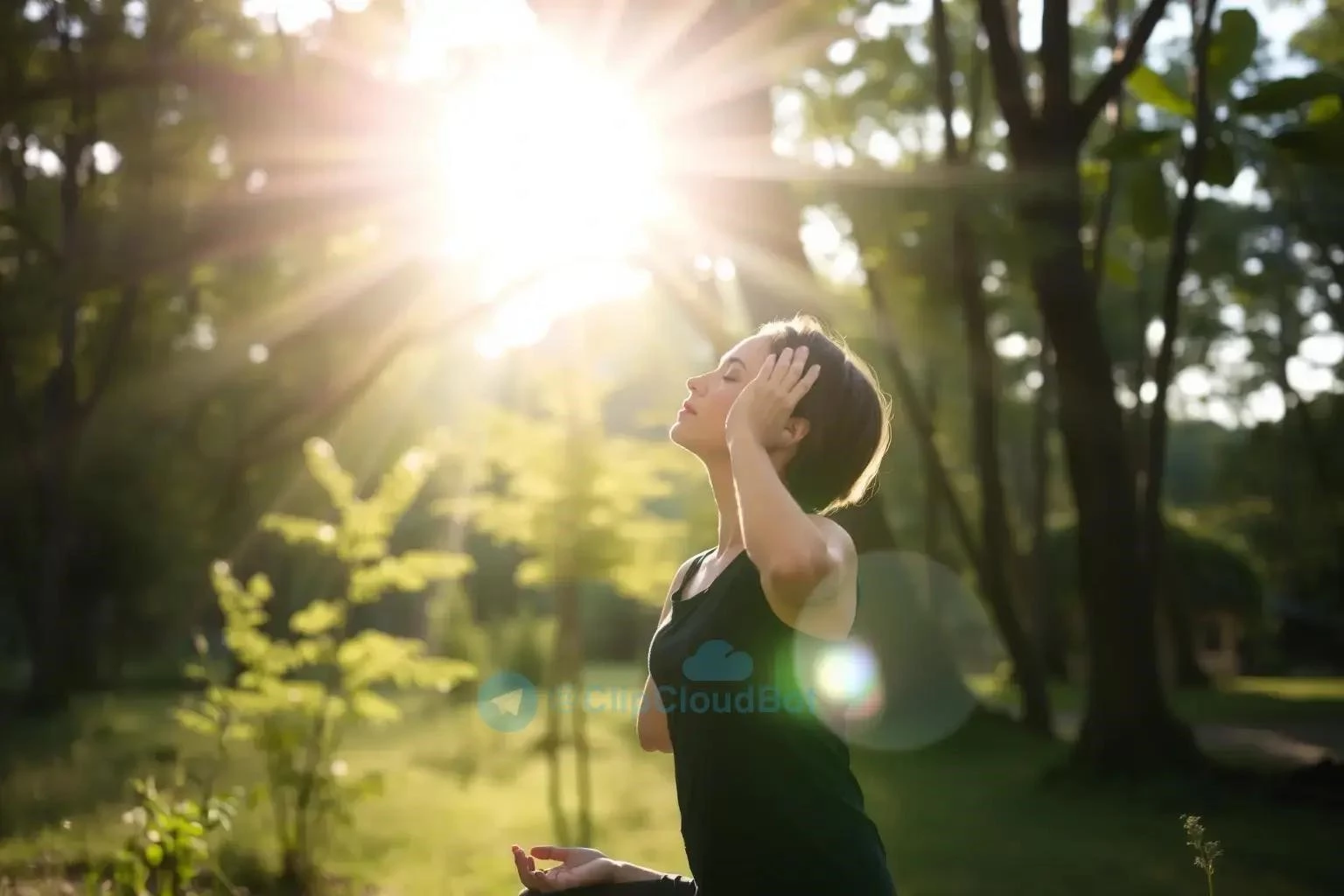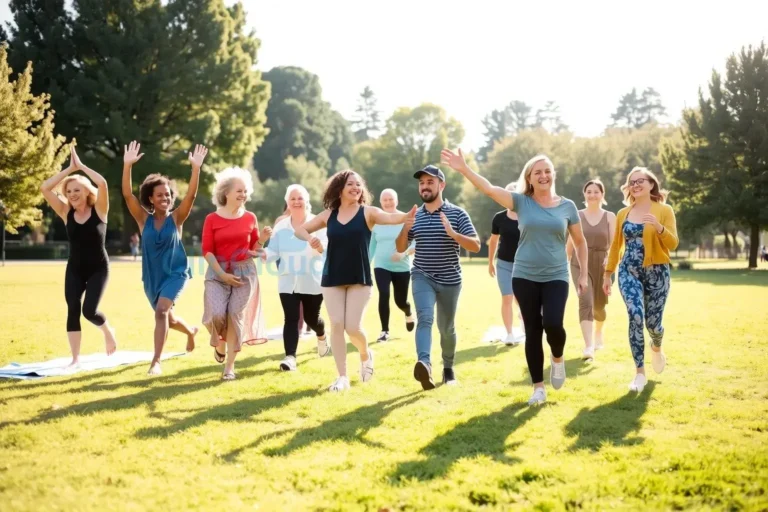Breathwork for Enhanced Well-being
Breathwork offers a powerful pathway to enhancing overall well-being. By consciously regulating our breath, we can influence both our physical and mental states. This ancient practice taps into the intrinsic connection between breath and life force, providing tools to cultivate energy, reduce stress, and achieve a greater sense of balance. Explore the transformative potential of breathwork and discover how it can positively impact your life.
Boosting Energy with Conscious Breathing
Feeling sluggish? Don’t immediately reach for that extra cup of coffee. Harnessing the power of conscious breathing can provide a natural and sustainable energy boost. Specific breathing techniques can oxygenate the body more efficiently, revitalizing your cells and sharpening your mind. Think of your breath as a readily available energy source, waiting to be tapped.
Several techniques can be employed to achieve this invigorating effect. Belly breathing, also known as diaphragmatic breathing, encourages deep, full inhalations that expand the abdomen, allowing the lungs to fill completely. This maximizes oxygen intake and promotes relaxation, counteracting the effects of stress, which can deplete energy levels. Try practicing belly breathing by placing one hand on your chest and the other on your belly. Inhale deeply, feeling your belly rise while your chest remains relatively still. Exhale slowly and completely, feeling your belly fall.
Another energizing technique is box breathing. This involves inhaling for a count of four, holding the breath for four, exhaling for four, and holding the empty lungs for four. This rhythmic pattern calms the nervous system and promotes a sense of focus, which can translate into increased energy and productivity. Box breathing can be easily incorporated into your daily routine, whether during your commute, at your desk, or before an important meeting.
Alternate nostril breathing, or nadi shodhana, is a yogic breathing technique that balances the flow of energy throughout the body. By alternately inhaling through one nostril and exhaling through the other, you can harmonize the left and right hemispheres of the brain, promoting mental clarity and reducing fatigue. This technique can be particularly beneficial during times of stress or mental overload.
Incorporating these conscious breathing techniques into your daily routine can significantly impact your energy levels. Start with just a few minutes each day and gradually increase the duration as you become more comfortable. With consistent practice, you’ll discover a readily accessible source of natural energy, leaving you feeling revitalized and ready to tackle the day.
Finding Calm Through Respiration Techniques
In our fast-paced world, finding moments of calm can feel like a luxury. Yet, tranquility is within reach through the simple act of conscious breathing. Respiration techniques offer a powerful toolkit for managing stress, anxiety, and promoting a sense of inner peace. By regulating our breath, we can directly influence our nervous system, shifting from a state of fight-or-flight to one of rest and digest.
One of the most effective calming techniques is diaphragmatic breathing, also known as belly breathing. This deep, slow breathing stimulates the vagus nerve, which plays a crucial role in regulating the parasympathetic nervous system, responsible for relaxation. As you inhale deeply, allowing your belly to expand, you send a signal to your body that it’s safe to relax and unwind.
Extended exhalation is another valuable tool for calming the mind. By consciously lengthening the exhale, you further activate the parasympathetic nervous system, promoting a sense of tranquility. Try inhaling for a count of four and exhaling for a count of six or eight. Notice how this extended exhale creates a sense of release and eases tension.
Bhramari Pranayama, or Bee Breath, is a yogic breathing technique known for its calming effects. This involves gently closing the eyes and placing the index fingers over the cartilage of the ears. Inhale deeply, and as you exhale, make a soft humming sound like a bee. The vibrations created by the humming sound have a soothing effect on the nervous system, reducing anxiety and promoting relaxation.
Visualizations can be combined with breathing techniques to enhance their calming effects. As you breathe deeply, imagine a peaceful scene, such as a tranquil beach or a serene forest. Engage all your senses in the visualization, allowing the image to deepen your sense of relaxation. With regular practice, these respiration techniques can become powerful tools for managing stress and cultivating inner peace in your daily life.
Exploring Specific Breathwork Methods
Delving into specific breathwork methods reveals a diverse range of techniques, each with unique benefits. From ancient practices to modern approaches, these methods offer targeted tools for enhancing physical and mental well-being. Explore the nuances of these techniques to discover the most effective practices for your individual needs.
Understanding the Benefits of the Wim Hof Method
The Wim Hof Method (WHM) has gained significant attention for its potential to improve physical and mental well-being. Developed by Wim Hof, also known as the “Iceman,” this method combines specific breathing techniques, cold exposure, and commitment to enhance resilience, boost energy levels, and strengthen the immune system. While it involves controlled hyperventilation, it’s crucial to learn and practice the WHM under proper guidance.
The core of the WHM lies in its unique breathing protocol. This involves rounds of controlled hyperventilation followed by breath retention. This process purportedly increases oxygen levels in the blood, leading to a surge in energy and a reduction in inflammation. Practitioners often report feeling a sense of euphoria and mental clarity after a WHM breathing session. However, it’s important to note that the physiological mechanisms behind these effects are still being researched.
Cold exposure is another integral component of the WHM. This can involve taking cold showers or immersing oneself in ice baths. While initially challenging, regular cold exposure is believed to strengthen the cardiovascular system, reduce inflammation, and improve mood. The combination of breathing exercises and cold exposure is thought to activate the autonomic nervous system, leading to increased resilience to stress.
The commitment aspect of the WHM emphasizes the importance of mindset and dedication. It encourages practitioners to cultivate a positive mental attitude and embrace challenges. This mental fortitude is considered essential for realizing the full benefits of the method. It’s crucial to approach the WHM with caution and respect. The breathing exercises can be intense and should not be practiced in situations where losing consciousness could be dangerous, such as while driving or swimming.
While anecdotal evidence and some preliminary research suggest potential benefits of the WHM, further scientific investigation is needed to fully understand its effects. If you’re interested in exploring the Wim Hof Method, it’s highly recommended to seek guidance from a certified instructor. They can provide proper instruction and ensure your safety throughout the practice.
The Power of Functional Breathing
Functional breathing refers to the way we breathe during rest and activity. It’s the foundation of how our respiratory system operates to support our overall well-being. While often overlooked, optimizing functional breathing can significantly impact our energy levels, stress response, and physical performance. Many individuals unknowingly develop dysfunctional breathing patterns, which can lead to a variety of issues.
Dysfunctional breathing can manifest in various ways, including shallow chest breathing, mouth breathing, and excessive sighing. These patterns can disrupt the balance of oxygen and carbon dioxide in the body, leading to symptoms such as fatigue, anxiety, dizziness, and poor sleep. Identifying and correcting these dysfunctional patterns is key to unlocking the power of functional breathing.
Several techniques can be employed to improve functional breathing. Diaphragmatic breathing, as mentioned earlier, is fundamental. It encourages deep, full breaths that engage the diaphragm, optimizing oxygen intake and promoting relaxation. Nasal breathing is another crucial aspect of functional breathing. Breathing through the nose filters, warms, and humidifies the air, improving oxygen absorption and reducing the risk of respiratory infections.
Learning to pace your breathing during physical activity is also important. Many people tend to over-breathe during exercise, which can lead to fatigue and reduced performance. By consciously slowing down and deepening your breath, you can improve oxygen delivery to your muscles and enhance endurance. Practicing mindful breathing throughout the day can also help reinforce healthy breathing patterns.
Improving functional breathing can be a gradual process, but the benefits are well worth the effort. With consistent practice, you can optimize your respiratory system, enhance energy levels, reduce stress, and improve overall well-being. If you suspect you have dysfunctional breathing patterns, consulting a qualified breathing specialist can provide personalized guidance and support.
Regulating the Nervous System through Breathwork
Our breath is intimately connected to our nervous system. When we’re stressed or anxious, our breathing becomes rapid and shallow, activating the sympathetic nervous system, responsible for the “fight-or-flight” response. Conversely, slow, deep breathing activates the parasympathetic nervous system, promoting relaxation and a sense of calm. Breathwork offers a powerful tool to consciously regulate our nervous system and manage stress.
Heart rate variability (HRV) is a key indicator of nervous system balance. It measures the variation in time between heartbeats. Higher HRV is associated with greater resilience to stress and better overall health. Breathwork techniques can directly influence HRV, increasing its variability and promoting a state of relaxation. By consciously slowing down our breathing, we send a signal to the nervous system that it’s safe to relax.
Resonant breathing, also known as coherent breathing, involves breathing at a rate of approximately five breaths per minute. This rhythmic breathing pattern has been shown to optimize HRV and promote a state of deep relaxation. Try inhaling for a count of five and exhaling for a count of five. Notice how this slow, rhythmic breathing calms the mind and body.
Box breathing, as described earlier, is another effective technique for regulating the nervous system. Its rhythmic pattern helps to balance the sympathetic and parasympathetic nervous systems, promoting a sense of calm and focus. Alternate nostril breathing can also be beneficial, harmonizing the left and right hemispheres of the brain and reducing stress.
Incorporating these breathwork techniques into your daily routine can significantly impact your nervous system regulation. By consciously controlling your breath, you can shift from a state of stress and anxiety to one of calm and well-being. With consistent practice, you can develop a greater sense of self-awareness and resilience, empowering you to navigate the challenges of daily life with greater ease.






